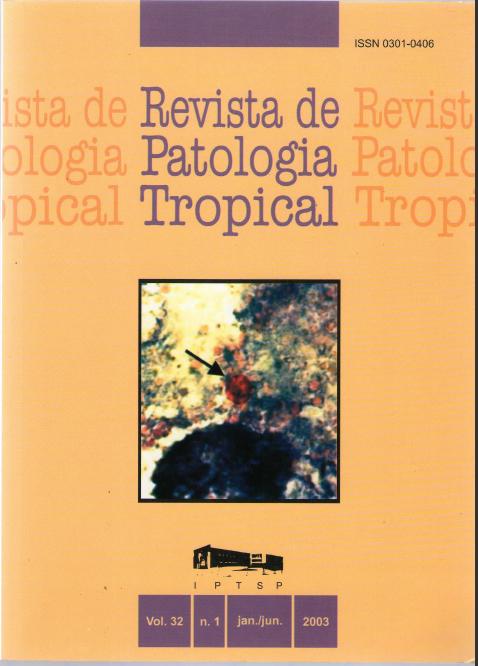USE OF SENTINEL ANIMALS TO DEMONSTRATE ACTIVE LEISHMANIAL TRANSMISSION IN AN AREA WITH LOW FREQUENCY OF HUMAN LESIONS IN WESTERN VENEZUELA
DOI:
https://doi.org/10.5216/rpt.v32i1.4352Resumo
One-hundred healthy animais of different species, including dog (8), fox (1), donkey (1), goat (1), opossum (3), rabbit (8), hamster (33) and guinea pig (45), kept under natural conditions, were used as sentinel animais (SA) to prove active and constant ieishmanial transmission, in an area where human cutaneous lesions are rareiy observed. The investigation was camed out in a field station located at the Andean region of Western Venezuela, where both sand flues species and Leishmania-parasites have been previously reported. The study consistcd of a follow-up using serologicai techniques. Blood samples from the SA were taken monthly and the sera processed to demonstrate seroconversion by detecting anti-Leishmania circulating antibodies (Abs). In 56% of the used animais belonging to 8 species ofsusceptible mammals, seroconversion was detected during the time of observation. To corroborate the serological results, 68 serum samples were seiected for a PCR assay with 32 (47%) of them showing positive results. The resuits indicate that combination of seroconversion and PCR in SA are usefui tools to demonstrate constant and active Leishmania transmission in areas where ciinical manifestation is uncommoniy observed in the human population. The potentiai of using SA as a promising method to investigate ieishmanial activity under field conditions is stressed and the epidemioiogical impiications ofthe present findings is discussed.Downloads
Downloads
Publicado
Como Citar
Edição
Seção
Licença
The manuscript submission must be accompanied by a letter signed by all authors stating their full name and email address, confirming that the manuscript or part of it has not been published or is under consideration for publication elsewhere, and agreeing to transfer copyright in all media and formats for Journal of Tropical Pathology.

